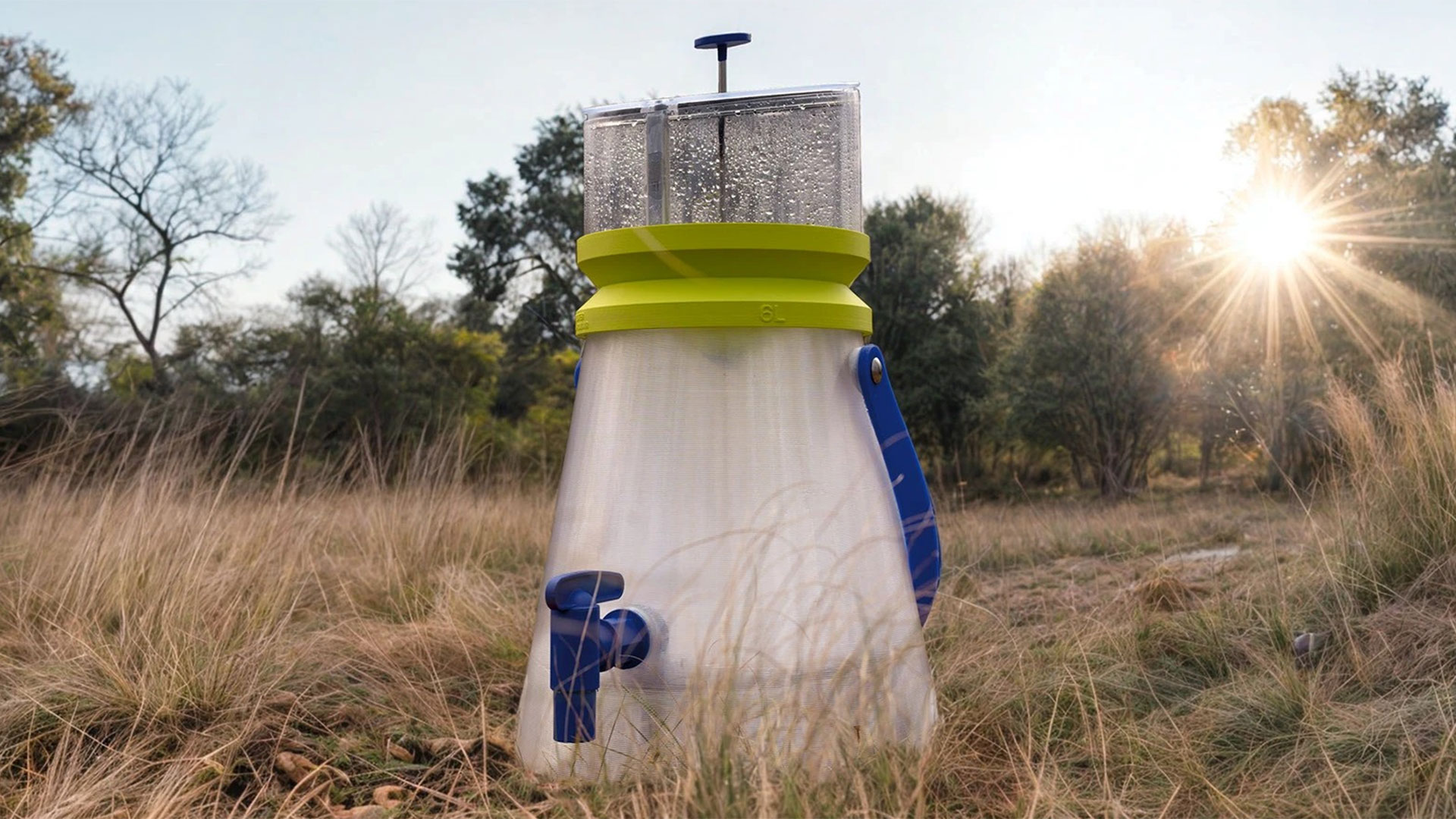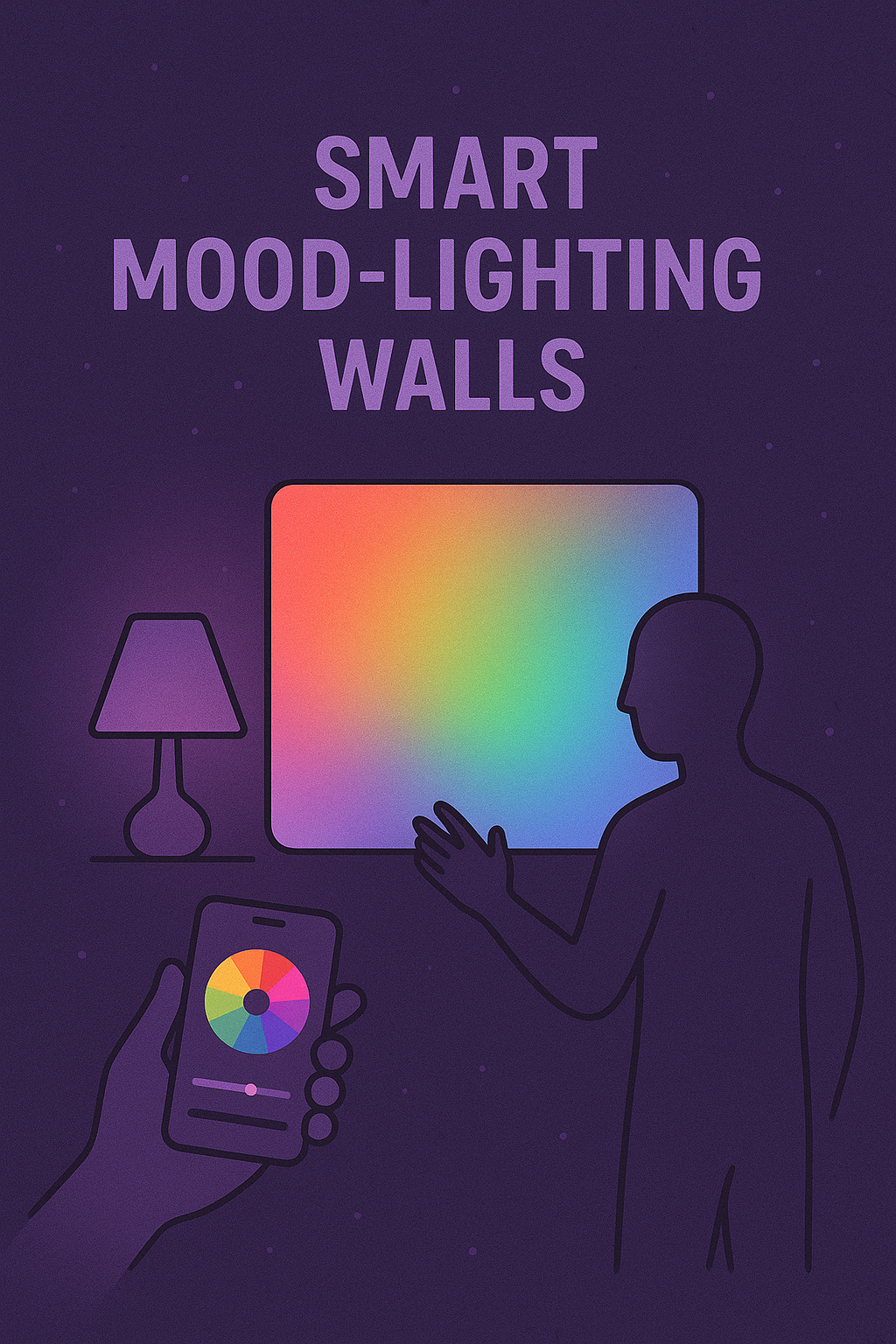Zero-Energy Cooling Technology
Zero-Energy Cooling (ZEC) refers to passive or self-sustaining cooling systems that regulate temperature without consuming external energy sources like electricity or fossil fuels.
Unlike air conditioners or refrigerators that rely on compressors and refrigerants, ZEC technologies use natural thermodynamic principles, radiative heat transfer, and material science to reject heat into outer space, store coolness, or balance heat flux intelligently.
The ultimate goal: to maintain comfort, preserve food and medicine, and cool buildings without carbon emissions, power grids, or noise — a true leap toward sustainable thermal autonomy.
Foundational Principles
Zero-energy cooling exploits several natural phenomena and engineering mechanisms:
1. Radiative Cooling:
Objects emit infrared radiation toward the cold vacuum of outer space (~3 K). By enhancing this radiative channel while reflecting sunlight, materials can passively cool below ambient temperature even under direct sunlight.
2. Evaporative & Desiccant Cooling:
Uses phase change (liquid → vapor) to absorb latent heat, or hygroscopic materials that remove humidity.
3. Thermal Emissivity Control:
Manipulating surface emissivity and reflectivity through nanostructures to manage heat balance.
4. Thermochemical Storage:
Stores “cooling potential” in chemical form during night or low-heat periods for later release.
5. Convective Airflow Engineering:
Architectural and geometric design that channels wind and convection for natural cooling.
Together, these create self-sustaining cooling ecosystems — no fans, no compressors, no grid.
Reflective Surface Layer (Solar Rejection Interface)
The topmost layer reflects most incoming solar radiation to prevent heat absorption.
Material Design:
- High Solar Reflectivity (> 0.95): Titanium dioxide (TiO₂), aluminum oxide (Al₂O₃), or silver nanocoatings.
- Nanostructured Textures: Scatter visible light while transmitting infrared.
- Hydrophobic / Self-Cleaning Surfaces: Maintain optical clarity and prevent dust buildup.
Function:
- Rejects up to 97% of incoming sunlight.
- Reduces surface heating by up to 40°C compared to standard materials.
Radiative Cooling Layer (Infrared Emission Engine)
This is the core cooling engine, engineered to emit thermal radiation through Earth’s atmospheric “infrared window” (8–13 μm wavelength) directly into outer space.
Material Composition:
- Photonic Crystals / Metamaterials: Custom-designed nanostructures that selectively emit infrared radiation.
- Polymers like PDMS or PMMA: Combined with high-emissivity oxides.
- Multi-layer Dielectric Films: Tuned for high emissivity in 8–13 μm band, low absorptivity in solar wavelengths.
Operating Principle:
- Absorbs heat from ambient environment.
- Radiates it outward into the cold sky, effectively cooling itself below ambient temperature (sub-ambient cooling).
Performance:
- Achieves 4–10°C below ambient air temperature in daylight.
- Operates continuously without power.
Thermal Management Layer (Passive Heat Regulation)
This layer ensures that the cooling effect is distributed and stabilized.
Subsystems:
- Phase Change Materials (PCM): Store excess coolness and release it during hot periods.
- Thermal Diodes: Control direction of heat flow.
- Aerogels / Insulators: Minimize conductive heat gain from surroundings.
- Heat Pipes or Capillary Channels: Distribute cooled air or fluids naturally via convection.
Functions:
- Smooths temperature fluctuations.
- Enables nighttime and daytime operation.
- Allows modular integration into walls, roofs, or standalone devices.
Control & Integration Layer (Smart Adaptation System)
Modern ZEC systems can include AI-enhanced materials or IoT integration for real-time optimization.
Smart Features:
- Thermochromic Surfaces: Change emissivity or reflectivity based on temperature (e.g., vanadium dioxide).
- Hydrogel Activation: Expands when hot, exposing cooling layer; contracts when cool.
- Micro-Sensors: Monitor ambient temperature, humidity, and solar intensity.
- AI Controller: Adjusts airflow valves or shutters in architectural setups.
Connectivity:
- Cloud-based monitoring for performance analytics.
- Integration into building energy management systems.
Mechanism of Operation (Simplified Workflow)
1️⃣ Sunlight hits surface → reflective layer rejects ~95% of it.
2️⃣ Infrared emission layer radiates heat through the atmospheric window into outer space.
3️⃣ Thermal layer captures and stabilizes the cooling effect.
4️⃣ System maintains sub-ambient temperature without any electricity.
5️⃣ Optional smart system adapts emissivity or insulation dynamically.
Applications
| Sector | Application | Description |
|---|---|---|
| Architecture | Passive building cooling | Roofs/walls coated with radiative materials reduce need for AC by 40–60%. |
| Food Storage | Off-grid refrigeration | Passive cold boxes preserve perishables and vaccines in remote areas. |
| Data Centers | Passive heat rejection | Radiative panels cool server enclosures without power. |
| Vehicles | Cabin temperature reduction | Radiative coatings reduce parked car temperature by up to 15°C. |
| Space Technology | Thermal regulation | Used on spacecraft and satellites for self-cooling. |
| Wearables | Thermoregulating fabrics | Clothing that cools body naturally under sunlight. |
Materials & Nanotechnology
1. Radiative Metamaterials:
Artificially engineered to enhance emissivity precisely at thermal wavelengths. Examples: SiO₂/Si₃N₄ stacks, Al₂O₃/SiC multilayers.
2. Nanoporous Polymers:
Lightweight, transparent to infrared, and diffusely reflective to visible light.
3. Graphene / MXene Films:
Used for tunable emissivity and self-cooling coatings.
4. Hydrogel–Metal Composites:
Absorb moisture during night (cooling) and release during day for evaporative synergy.
5. Aerogel Layers:
Ultra-low thermal conductivity (<0.02 W/m·K) insulate cooling core.
Hybrid Cooling Concepts
Some ZEC systems combine multiple passive mechanisms for higher efficiency:
Radiative + Evaporative Cooling Hybrid:
- Top layer emits thermal radiation; inner hydrogel evaporates water slowly to amplify cooling.
Thermo-Responsive Solar Filters:
- Reflect visible light during day, absorb infrared at night for 24-hour balancing.
Desiccant-Integrated Cooling:
- Silica or zeolite adsorb moisture, enhancing evaporation rate.
Phase-Changing Radiative Roofs:
- PCM stores nighttime coolness and releases it during day via radiative layer.
Example Implementation: Passive Cold Box
A zero-energy vaccine storage box for off-grid areas:
- Outer Shell: Solar-reflective polymer coating.
- Inner Chamber: Radiative metamaterial surface emitting at 10 μm.
- Core Insulation: Silica aerogel.
- Result: Maintains internal temperature below 8°C while ambient reaches 40°C — no electricity required.
Environmental Benefits
- Zero Electricity Use: Completely passive operation.
- No Refrigerants: Eliminates ozone-depleting gases.
- Carbon Neutrality: Zero operational emissions.
- Long Lifetime: Minimal maintenance due to no moving parts.
- Recyclable Materials: Metal oxides, ceramics, and polymers can be reused.
Performance Metrics
| Parameter | Typical Value |
|---|---|
| Solar Reflectivity (ρₛ) | > 0.95 |
| Infrared Emissivity (εₜ) | > 0.90 |
| Cooling Power Density | 100–150 W/m² (daytime) |
| Temperature Drop | 4–12°C below ambient |
| Lifespan | 10–25 years (coating dependent) |
Challenges
- Material Cost: Nanostructured photonic coatings remain expensive.
- Durability: Dust, moisture, and UV exposure degrade performance.
- Nighttime Operation: Reduced radiative contrast when sky temperature rises.
- Scalability: Large-scale fabrication of photonic films is still under development.
- Cultural Acceptance: Passive cooling requires design adaptation in architecture.
Emerging Innovations
- Self-Regenerating Surfaces: Coatings that heal micro-scratches using sunlight-activated polymers.
- AI-Integrated Roof Panels: Predict optimal emissivity patterns based on weather forecast.
- 3D-Printed Radiative Tiles: Customizable, low-cost passive cooling modules.
- Waterless Desert Coolers: Combining radiative emission and capillary airflows for arid environments.
- Smart Fabrics: Nano-radiative textiles that passively cool human skin.
Economic & Social Impact
| Sector | Benefit |
|---|---|
| Rural Healthcare | Enables cold storage for vaccines & medicine off-grid |
| Urban Infrastructure | Reduces building cooling demand and power bills |
| Agriculture | Extends food shelf life post-harvest |
| Developing Nations | Provides sustainable thermal comfort where electricity is scarce |
| Climate Resilience | Mitigates urban heat island effect |
Ethical & Policy Considerations
- Equitable Deployment: Ensure access in low-income or hot regions.
- Sustainability Standards: Certification for eco-friendly coatings.
- Building Codes: Integration into green building norms (LEED, BREEAM).
- Data Transparency: When IoT sensors are used, privacy and security must be ensured.
Future Vision
Imagine cities covered in self-cooling surfaces that reflect sunlight and radiate heat directly into space.
Roofs become thermal mirrors, streets stay cool even under summer heat, and food preservation no longer depends on electricity.
Future ZEC systems will merge with AI climate modeling, smart materials, and urban design, creating thermally balanced environments that operate entirely off-grid.
Ultimately, Zero-Energy Cooling will be as fundamental to sustainable living as solar power — a silent, invisible technology that cools the world without consuming it.
Vision Summary
| Attribute | Description |
|---|---|
| Core Principle | Passive radiative and thermodynamic cooling |
| Power Requirement | Zero external energy |
| Key Technologies | Photonic materials, aerogels, hydrogels, AI control |
| Applications | Buildings, cold storage, vehicles, wearables |
| Impact | Carbon-free cooling revolution |
| Philosophy | “Cool the Earth without warming it.” |




Post Comment